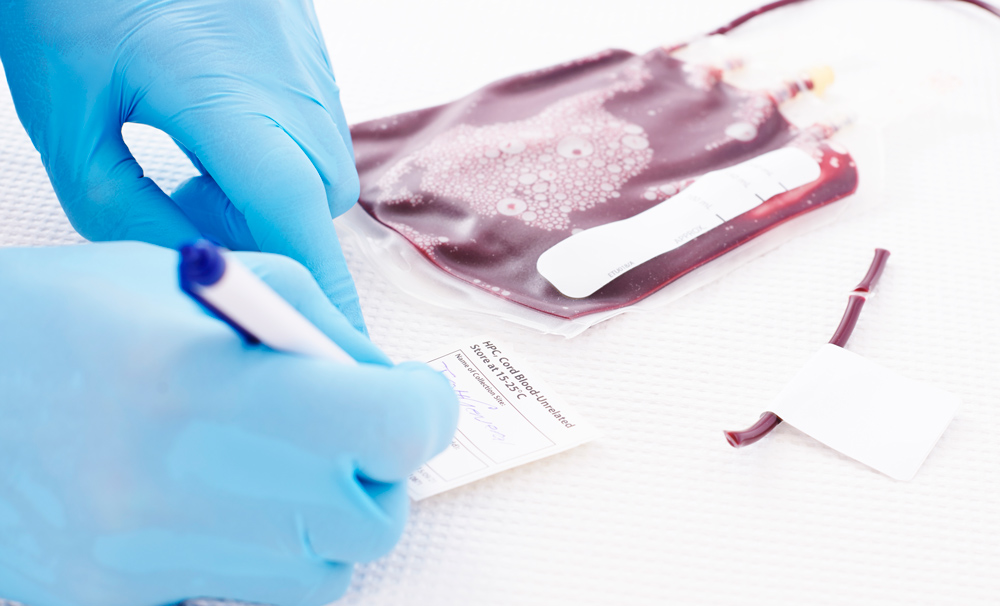Cord Blood Banking
Hope for the future of science and medicine
Are you pregnant or planning on getting pregnant? You should consider saving your baby’s cord blood for the great benefits it has in treating many diseases. The blood left over in the umbilical cord and placenta after a baby is born has special cells in it that can treat and even cure some serious diseases.
The blood can be collected and stored — and that’s what many private cord blood banking companies encourage parents to do, in case their child (or someone else in the family) develops one of those diseases in the future. The umbilical cord, which used to be thrown away in the past after birth, is now an important source for treating diseases; therefore, it should be collected and stored.
Stem cells, as well as umbilical cord blood stem cells, are very important given their role in the treatment of many diseases, hence, cord blood banks have begun to spread more and more due to the availability of necessary techniques and methods that allow the possibility of storing this blood for many years allowing for future use, which has revolutionized the world of medicine and has given a new hope in life. Cord blood contains blood-forming stem cells that can be used in the treatment of patients with blood cancers such as leukemias and lymphomas, as well as certain disorders of the blood and immune systems.
Oxygen and nutrients from the mother’s blood are transferred across the placenta to the fetus through the umbilical cord; cord blood is one of the most important sources of stem cells that match the baby’s genetic code; cord blood banks are able to store umbilical cord blood for 20 to 25 years. The process takes less than 10 minutes, and up to 5 ounces is collected; the blood is then shipped out to the bank of your choice, where they test it. If the stem cells are usable, the bank cryogenically freezes the cord blood, so it remains useful decades from now.
How is cord blood collected?
Cord blood is collected right after birth. The collection process is painless and safe for you and your baby, and it doesn’t interfere in any way with your labor or delivery. Cord blood is filled with stem cells. These cells greatly improve the body’s natural immune system and increase healthy blood count. Cord blood cells, also called “units,” can adapt to many different types of cells.
Medical staff members usually collect cord blood right after birth, but can also wait several minutes if the parents want to participate in delayed cord clamping. The clamping is done just like a normal procedure and is completely painless for both the mother and her baby.
First, the cord is clamped and cut, just like a normal umbilical cord removal. The medical staff must be trained on proper cord blood collections – if they wait too long, the blood clots, and will not be used for storage. Then, the blood is extracted. A needle is placed into the cord and gently pulls out remaining blood. This medical device is kept away from your baby, so the procedure is as safe as possible. The process takes less than 10 minutes. Both the cord blood and cord tissue are overwrapped for extra protection against cross-contamination during storage.
All specimens are stored in the vapor phase of liquid nitrogen for cryogenic preservation, at temperatures below −170 degrees Celsius. All collections are stored in our state-of-the-art storage facility. Usually, within 36 to 48 hours of collection, the cord blood and tissue are tested, processed, and cryogenically stored.
Stem Cells
Blood-forming stem cells in the bone marrow can give rise to red blood cells, white blood cells, and platelets. Stem cells are unique cells: They have the ability to become many different types of cells, and they can replicate rapidly.
Stem cells extracted from the umbilical cord blood are the smallest and safest; they are also able to evolve to give many types of specialized cells. Stem cells available in the umbilical cord blood are like a storage to compensate for diseased or malformed cells in the human body.
All stem cells have three general properties: they are capable of dividing and renewing themselves for long periods; they are unspecialized; and they can give rise to specialized cell types. Stem cells, directed to differentiate into specific cell types, offer the possibility of a renewable source of replacement cells and tissues to treat diseases including Alzheimer’s disease, spinal cord injury, stroke, burns, heart disease, diabetes, osteoarthritis, and rheumatoid arthritis.
Stem cells also play a pivotal role in maintaining one’s health and are used in transplantation to restore damaged cells and tissues by storing umbilical cord blood, which is a rich source of stem cells, immediately after birth.
Diseases treated with cord blood
Today, cord blood stems cells are used in the treatment of nearly 80 diseases, including a wide range of cancers, genetic diseases, and blood disorders. In a cord blood transplant, stem cells are infused into a patient’s bloodstream where they go to work healing and repairing damaged cells and tissue. When a transplant is successful, a healthy new immune system has been created.
Stem cell transplantation is the only treatment currently available to patients with blood diseases such as: blood cancers, lymphatic diseases, as well as various immunodeficiency diseases.
The patient is given high doses of stem cells in order to compensate for healthy cells after being exposed to chemotherapy or radiotherapy to kill all cancer cells.
Who can benefit from cord blood?
Any family can benefit from stored cord blood, but for families with a history of dangerous medical conditions, including leukemia, lymphoma and immune deficiency diseases, access to stem cells is even more valuable. Certain tests must be completed before beginning the stem cell collection and/or transplant. These tests will provide important information about your medical condition and readiness to safely undergo the transplantation procedure. Even though you may have had these tests in the past, current results may need to be obtained. This will save the patient from the incurable disease they are suffering from.


















This site is absolutely fabulous!
Keep up the great work guyz.
Always make sure your boyfriend passes a background check.